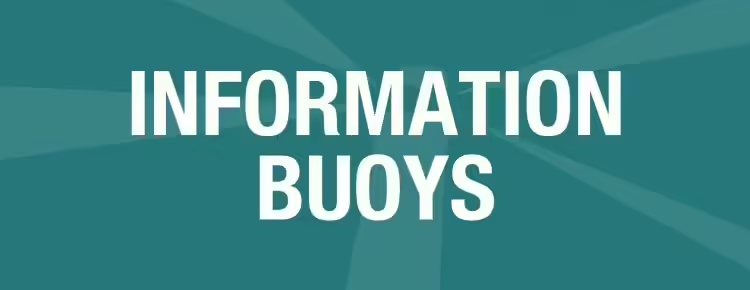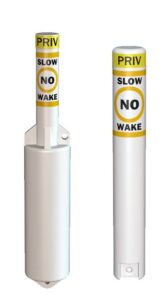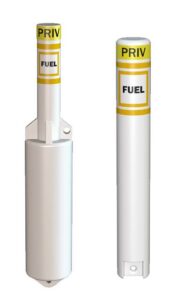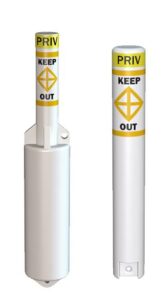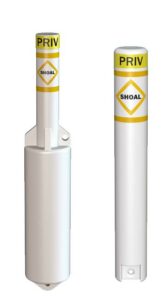Go Deep Aids to Navigation information buoys are an important part of the navigation landscape. From control buoys warning of a no-wake zone to a hazard buoy advising of a shoal or other danger, we explain the use for each information buoy and why it’s important to you.
Control Buoy
– White in color
– Marks an area where aspects of boating may be restricted
– Marked by orange horizontal bands with one above and below an orange circle on both sides of the buoy
– 4” band of retro-reflective tape with PRIV signalling a private aid to navigation
– Letters or symbols inside or around the circle signal the restriction to boaters
– If the buoy has a lantern, the lens must be yellow (amber) in color and flash once every 4 seconds
Information Buoy
– White in color
– Informs boaters of places of interest such as fuel, food, etc.
– Marked by orange horizontal bands with one above and below an orange square on both sides of the buoy
– 4” band of retro-reflective tape with PRIV signalling a private aid to navigation
– Letters or symbols inside the square display a message to boaters
– If the buoy has a lantern, the lens must be yellow (amber) in color and flash once every 4 seconds
Keep Out Buoy
– White in color
– Marks an area where boating is strictly prohibited
– Marked by orange horizontal bands with one above and below an orange diamond with crosses on both sides of the buoy
– 4” band of retro-reflective tape with PRIV signalling a private aid to navigation
– If the buoy has a lantern, the lens must be yellow (amber) in color and flash once every 4 seconds
Hazard Buoy
– White in color
– Marks an area where boating may be restricted
– Marked by orange horizontal bands with one above and below an orange diamond on both sides of the buoy
– 4” band of retro-reflective tape with PRIV signalling a private aid to navigation
– Letters or symbols inside the diamond signal the hazard to boaters
– If the buoy has a lantern, the lens must be yellow (amber) in color and flash once every 4 seconds
